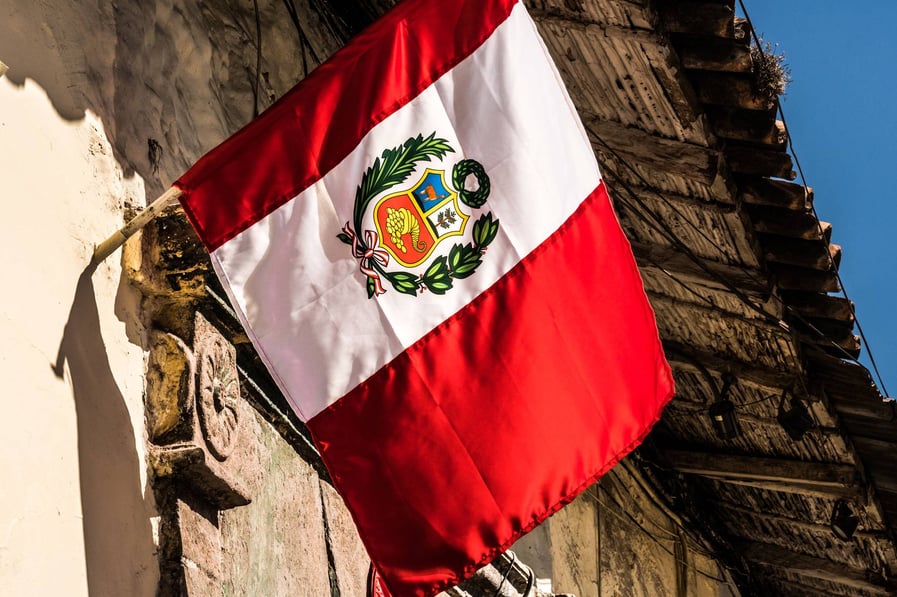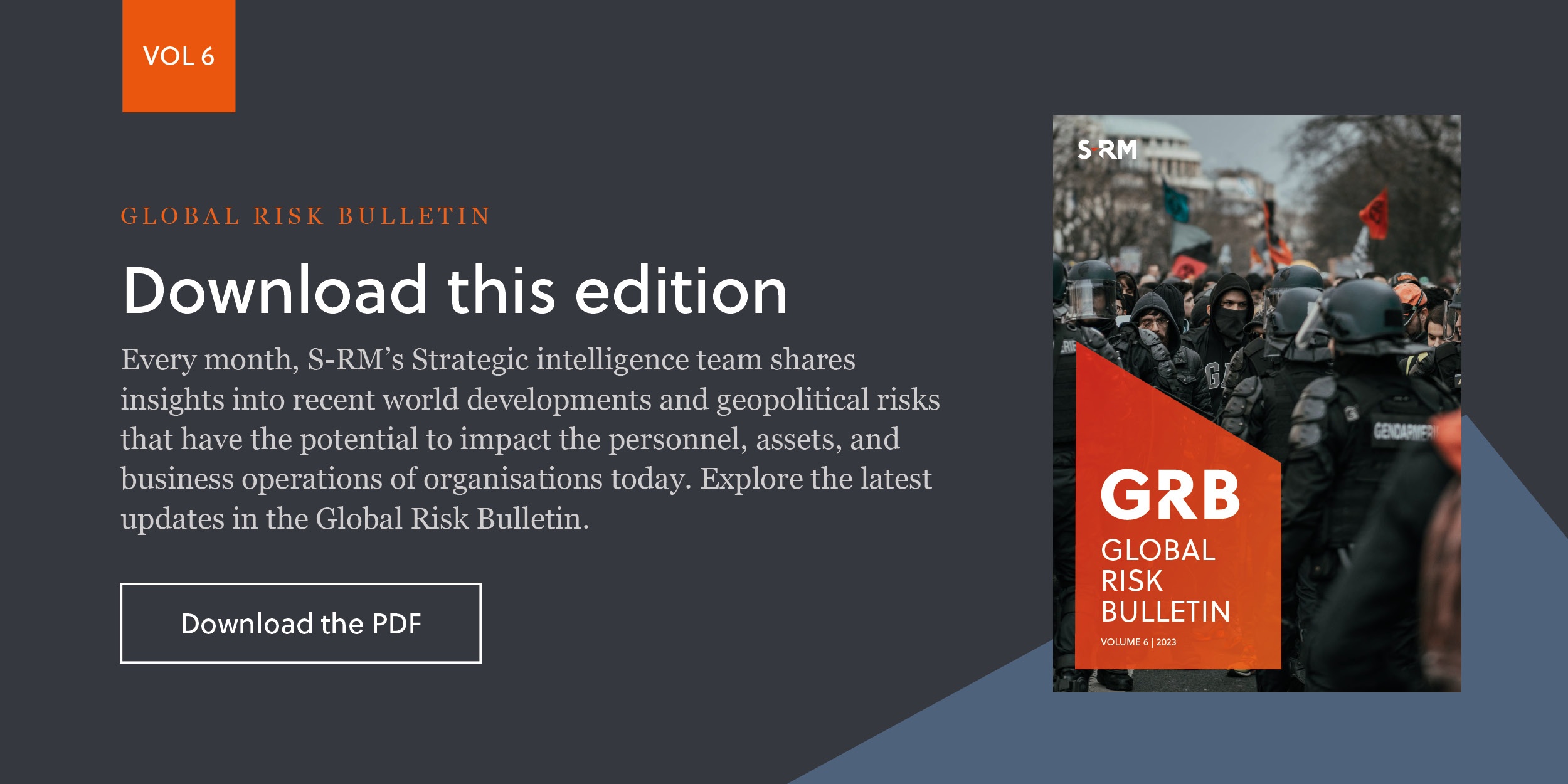As Peru experiences yet another cycle of demonstrations over its most recent leadership change, political infighting continues to hamper efforts to address the protesters' grievances. Erin Drake examines the recent unrest in Peru, and its impact on the commercial environment.
Amid an ongoing political crisis that has spanned seven presidencies since 2016, recurring and often violent anti-government unrest continues to characterise Peru’s political and security environment. In 2023, unrest has centred on the perceived illegitimacy of incumbent President Dina Boluarte, who assumed office following former leftist President Pedro Castillo’s impeachment in December 2022. Castillo supporters, who make up a large portion of anti-government demonstrators and include indigenous communities and farmers in the country’s south, have accused Boluarte and Peru’s right leaning Congress of staging a legislative coup, driving widespread disillusionment with both the president and the government. Frustrations have been exacerbated by subsequent states of emergency, and police and military crackdowns on protests in which an estimated 70 people have been killed since December. Castillo’s supporters, joined by other civic groups and unions, are not only calling for Boluarte’s resignation, but also for Castillo’s release from prison, Congress’s dissolution, early general elections, and a new constitution.
A constant deadlock
Longstanding power struggles between Peru’s successive presidents and Congress have resulted in frequent leadership changes in recent years, sustaining a political deadlock that has often prevented the passage of crucial reforms. This impasse has underpinned anti-government sentiment and driven unrest, including during Castillo’s tenure, as right-wing factions in Congress frustrated most of his efforts to govern in order to maintain the political and economic status quo. While Boluarte has aligned herself with Congress’s dominant political factions – a perceived betrayal for Castillo’s supporters – this coalition has not necessarily led to alignment in decision-making on critical issues. Amid dismally low public approval for Congress – around 6 percent – conservative factions looking to secure their political futures have rejected Boluarte’s attempts to bring forward elections as she sought to meet at least one of the protesters’ major demands.
In June, the Boluarte-led government confirmed its intent to stay in power until 2026. But, lacking perceived legitimacy and popular support, Boluarte could face impeachment challenges from Congress as it looks to distance itself from local and international criticism over her heavy-handed response to anti-government protests. Already facing an investigation by the public prosecutor for her role in the protest crackdowns, in July, Boluarte promised that only ‘legitimate force’ would be employed in response to further rioting. However, this move alone is unlikely to appease protesters, and in the context of ongoing political uncertainty – and with diminishing prospects for securing any of their demands – demonstrators’ intent to sustain or escalate disruptive unrest could increase.
Affected sectors
Tourism
The general director of Peru's largest hotel chain described the first quarter of 2023 as “catastrophic,” while the Cusco Chamber of Commerce reported that 95 and 50 percent of tourism reservations were cancelled in the first and second quarters of 2023, respectively. Although tourism arrivals have since increased and authorities have reopened Machu Picchu, the country’s main tourist attraction, chambers of commerce have expressed concern that the announcements of further protests have resulted in cancellations for hotels.
Agriculture
In the agricultural industry (Peru’s largest source of employment), trade organisations like the Asociación de Gremios Productores Agrarios del Perú (AGAP) have indicated that logistics and exports have been severely impacted due to highway and port blockades, and related curfews and government-imposed restrictions on movement. Between December and January, AGAP reported agricultural export losses of over USD 200 million.
Mining
The mining sector remains vulnerable to unrest amid historic feuds with indigenous communities, who also make up a large portion of the current anti-government movement. From January to March, production decreased in 17 departments, concentrated in the mineral-rich southern region. Although some mining companies have sided with protesters, ongoing states of emergency in mining regions have slowed production and delayed new projects.
Merchants
Meanwhile, ahead of renewed unrest, merchants in Lima are seeking enhanced protection from the government, as previous demonstrations prompted civil disorder that saw vandalism, looting and violent clashes with security forces, causing many businesses to suspend operations for days at a time.
Disruptive impact
Protests between December and March 2022 caused countrywide disruptions as demonstrators blockaded strategic highways, airports and ports, prompting fuel and food shortages in several cities. Businesses suffered operational disruptions and many suspended commercial activities as supply chains collapsed. Demonstrations lost momentum in March, but Congress’s failure in April to impeach Boluarte over protester deaths, and a May Supreme Court ruling that protests were not constitutionally supported, have led to calls for renewed resistance that will likely fuel further disruptions to business activities in the coming months.
The government has tried to reassure and incentivise investors by aggressively pursuing foreign investment in energy, transport and infrastructure sectors to stimulate economic recovery and growth, damaged by months of unrest and the impact of the El Nino weather pattern on agricultural output; 71 percent of CEOs across 136 of Peru’s largest companies have indicated approval of Boluarte and her business-friendly approach. However, while Peru’s investment climate has remained relatively resilient to years of unrest, it remains unclear if this strategy will be enough to offset potential investor fatigue as protests continue to disrupt operations in the longer term.
Status quo
Political stability will remain elusive in the coming months. The combination of political inertia, grassroots activism, and the government’s strategy of protest suppression over resolution will maintain the existing threat of periodic, disruptive unrest, and could hinder efforts to secure a lasting return to political and social stability. In turn, commercial operators and prospective investors may need to brace for further disruptions.





